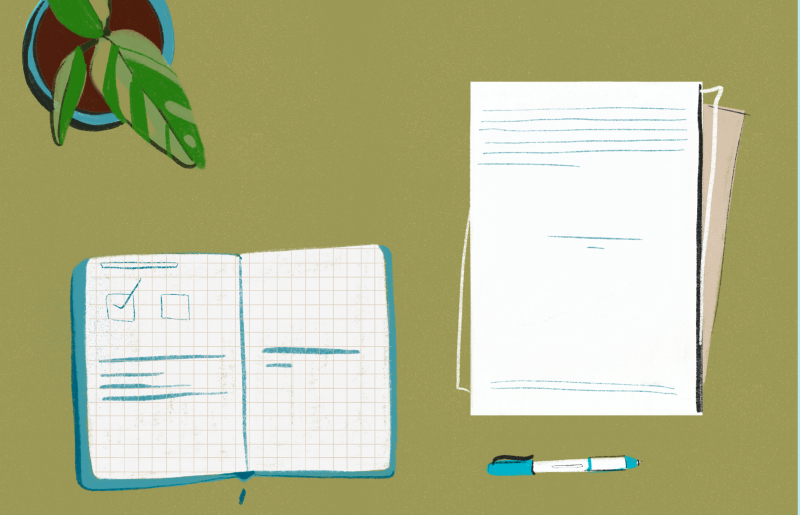Whether you’ve just found out you’re pregnant, have reached the halfway mark or are planning for your final few weeks of work, this checklist guides you through each step of the journey before taking parental leave. Tap into our handy resources and walk out the door on your last day feeling calm, confident and centered.
We like to call this your career version of what to expect when you’re expecting.
This is our most comprehensive guide and covers everything and anything you need to consider when embarking on parental leave.
Employee Parental Leave Checklist – A Week by Week Guide
As soon as you find out you’re pregnant
- Familiarize yourself with your employer’s specific policy for parental leave. Because these vary greatly, your leave may include a combination of sick leave, personal time off and/or paid or unpaid family leave depending on your country of residence.
- Your next stop should be to visit your HR department to clarify any questions you may have. All conversations with HR must be kept confidential, so don’t worry about your manager finding out before you’re ready to make the big announcement. Ask about specific forms you’ll need to fill out, how/when to add your baby to your insurance policy, etc. Also find out if other employee benefits will continue while you’re on leave (e.g., retirement match or insurance coverage)
- If you’re a consultant, a flex-time or a contract worker, learn about any benefits your employer/union may offer.
12+ weeks
- When you are ready, let your manager know that you’re pregnant. Some people may decide to tell their boss earlier, but this is a personal decision and depends on the relationship. This is an opportunity to have an open and honest conversation about the expectations of managing your pregnancy. Specifically, we suggest discussing your pre-natal appointments and any possible sickness. It’s also important to point out any health and safety concerns you may have.
- Set up a time to meet with your manager and advise them that you’re pregnant.
- Email your manager post-meeting to thank them and confirm your discussion.
- Discuss your planned prenatal appointments with your manager.
13 weeks
- Communicate your news! Consider how you might like to advise your stakeholders (including your team members, colleagues, and internal and external contacts). Email is the usual go-to, but it all depends on your workplace and relationships.
- Start to think about how and when you wish to take your leave and your estimated planned leave date.
- Ensure you are working safely.
- If you’re part of a union, a consultant, a part-time or contract worker, find out what policies or entitlements you can access.
15 weeks
- Start a designated folder on your work computer and store everything pregnancy-related: emails, documents, policies, etc. Staying organized will make life easier as you move toward your due date.
16 weeks
- Let your manager know that you are working on a parental leave plan and that you will share it with them closer to your leave date. Trust us, they will love your proactiveness.
- Begin creating your parental leave plan.
20 – 24+ weeks
- Start to consider your financial needs and requirements given your changing family situation.
- Continue your parental leave plan. Sounds early, but why not start the template and add to it as you think of things.
- If you want to retain your computer, ask about working from home during parental leave.
- Try and find another parent who has recently returned to work, with whom you have (or could have!) a good relationship. This is a great chance to have someone in the office who understands your situation and can answer all those practical questions you might have whilst on leave.
28 weeks
- If your government offers a Paid Parental Leave scheme, apply for it. We suggest getting this sorted before the chaos of those last few weeks. Some country governments require this to be completed earlier on in your pregnancy journey, make sure you are aware of these deadlines as well.
- Gain an understanding of your local Child Care options and any subsidies you may be eligible for.
30 weeks
- Set up individual meetings with your direct reports/peers before your parental leave begins. This is a chance to share your leave plan, discuss your expectations and clarify any concerns or issues.
- Spend time understanding which HR forms (if any) need to be completed. What needs to be submitted online?
- Understand what happens to your other leave entitlements (i.e. annual) whilst on leave.
- Keep working on your parental leave plan as you never know when your baby could arrive.
32-34 weeks
- Formally meet with your manager.
- Keep working on your parental leave plan.
- Print out your contact list—you will love having this at home whilst on leave.
- Continue preparing your keeping in touch plan.
34 weeks
Only two to three weeks left!
- Write a list of everything you need to think about before you leave.
- Keep working on your handover document.
- Update your contact details in the company portal/intranet.
- Update your details with HR.
- If you have a replacement, schedule ample time to spend with them on your handover and introducing them to stakeholders. If you do have the luxury of time, in the later weeks before you leave, try to let your replacement ‘run’ things and use you as a support person. This will help them get well into the swing of things before you actually leave.
- Find out if there is a support network for new parents. If not, you can think about creating one on your return—we have some great resources to help you in the Tools and Checklists section of this platform.
- Think about who from work you will contact once your baby arrives. Getting the distribution list ready for the arrival announcement is stressful, so think about the best way to manage and coordinate this. You may decide to tell one person who will share your news with everyone. Others may set up a ‘work’ distribution list on their phone.
- Ensure you have conducted your performance review with your boss and taken them through your parental leave plan and handover document.
- Organize subscriptions to relevant online journals, newsletters and updates from your home email address (if you won’t have access to a work email address). This will help you stay in touch with industry news.
Last week
There are several things that need to happen in your last week:
- Formally meet with your boss to close out any last-minute items.
- Ensure your parental leave is inputted into the system.
- Change your voicemail.
- Clean out your emails.
- Prepare a list of emails that you will need whilst on leave to stay in touch with people.
- Set up your out-of-office email so it’s ready to go.
- Write down all your passwords and keep these somewhere safe.
Last day!
Now that you’ve followed this plan, you should have nothing left to worry about on your last day in the office. More often than not, your co-workers will host you to a small party or lunch, and then you can leave the workplace feeling confident about your exciting journey ahead.
The only things you should have left to do are:
- Activate your out-of-office email.
- Send your final note to your team and stakeholders.
- Send a final note to your managers thanking them for their support and reinforcing that you would like to keep in touch.
Congratulations! You’ve done everything you can to ensure a smooth transition for all involved. Now’s the time to relax and enjoy the next chapter.
And when the time comes for you to return to work make sure to read our article on the top 10 best ever tips for a trouble-free return to work.


